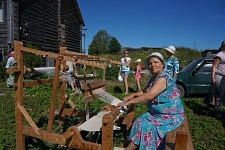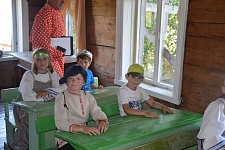The Tree of Life

Local communities have been facing high unemployment after industrial plant shutdowns in the area.
Velikaya Guba village, Medvezhyegorsky District, Republic of Karelia (Northern European Russia). Located 270 km from the capital of the republic, town of Petrozavodsk, and 1,276 km from Moscow. First mentioned in 1583; population – 1,035 people.
Project Description
Local communities have been facing high unemployment after industrial plant shutdowns in the area. There has been a dramatic population decline; villages stand empty while rural schools, hospitals, and cultural institutions are closing their doors. New forms of business in quarry development and trout breeding have disrupted the unique ecosystem of the Zaonezhye area, famous for its healing springs and scenic natural landscapes.
The area is still inhabited by an indigenous ethnic group with distinctive traditions and a rich culture. There are 46 historical settlements dating back over 500 years and 125 architectural monuments. However, the
Results of the first phase of the project include the opening of a traditional
Objectives of the next phase
The success of the first phase has established the necessary conditions for a sustainable partnership between the government authorities, public institutions, and local communities. The
The next phase will focus on devising a strategy for the social and cultural development of the area, identifying prospective cultural, historical, and natural sites and designing programmes for their preservation, use, and promotion in partnership with the local community. Work on expanding the tourist offer — hiking and
Gallery
Project team
















